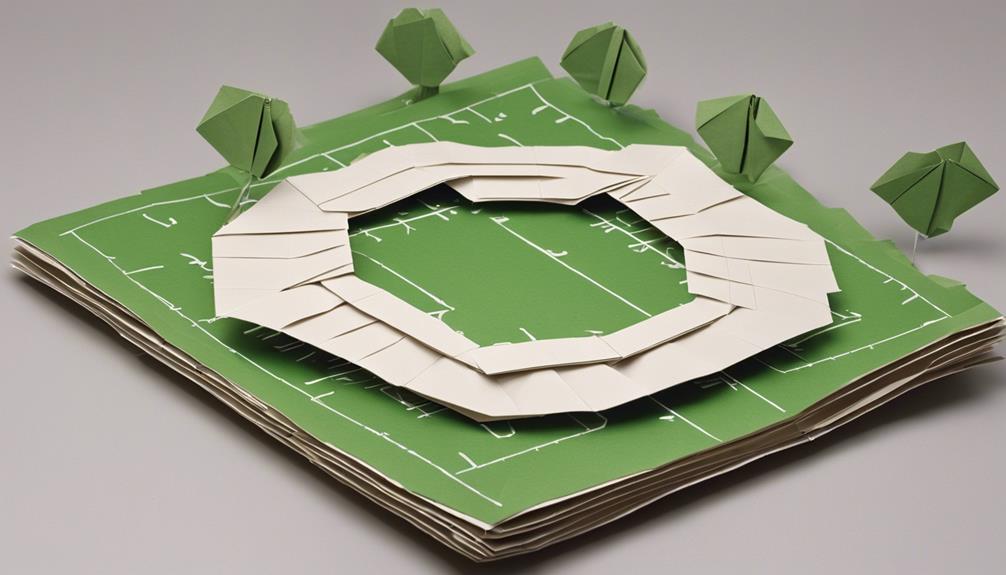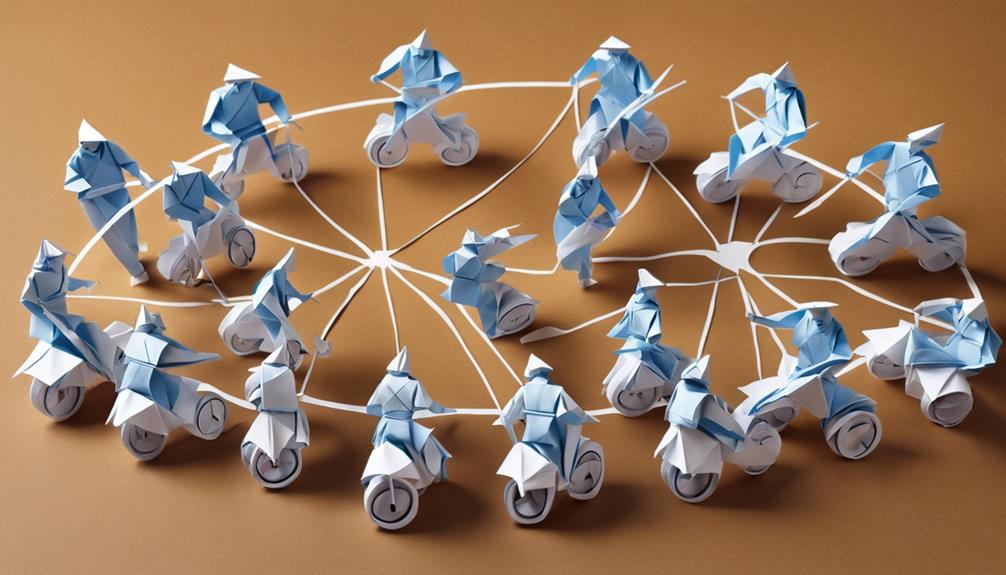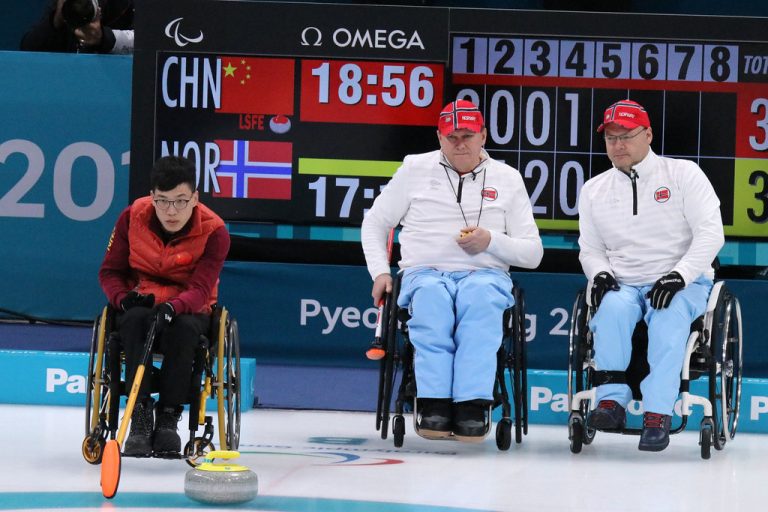General Rules of Segway Polo
When it comes to Segway Polo, the saying "practice makes perfect" truly applies. As you navigate through the regulations governing this unique sport, you'll find that precision and strategy play key roles in achieving victory. From understanding the field dimensions to mastering penalty types and offenses, each aspect contributes to the dynamic nature of the game. So, lace up your boots, adjust your helmet, and get ready to explore the intricacies of Segway Polo's general rules.
Segway Polo Field Dimensions

When setting up a Segway Polo field, make sure to adhere to the official dimensions to ensure fair play and safety. Proper maintenance of the Segway polo field is essential for a smooth and enjoyable game. By following these guidelines, you can create a safe environment for players and spectators alike.
Segway polo field maintenance is crucial to prevent injuries and ensure the longevity of the playing surface. Regularly inspect the field for any hazards such as uneven terrain, loose obstacles, or slippery areas. It is important to keep the field clean and free of debris that could potentially cause accidents during gameplay. Additionally, maintaining the field's boundaries and markings will help players stay within the designated playing area, promoting fair and competitive matches.
Ensuring Segway polo field safety is paramount in creating a positive experience for everyone involved. Adequate lighting around the field can help players see clearly and react to the game effectively. Providing safety equipment such as helmets and pads is also essential to prevent injuries during intense gameplay. By prioritizing safety measures and maintaining the field properly, you can enjoy the thrill of Segway polo while minimizing risks and maximizing fun.
Player Equipment Requirements
Ensuring that players have the proper equipment is essential for safe and competitive Segway Polo matches. Player safety is paramount in any sport, and Segway Polo is no exception. Here are the equipment regulations that players must adhere to:
- Helmet: A certified helmet must be worn at all times during the game to protect the player's head from potential falls or collisions.
- Knee and Elbow Pads: To prevent injuries from impacts, players are required to wear knee and elbow pads to cushion any falls or collisions.
- Gloves: Wearing gloves is mandatory to provide players with a better grip on their Segways and mallets, reducing the risk of accidents.
- Appropriate Footwear: Players must wear sturdy, closed-toe shoes to ensure proper foot support and stability while riding the Segway on the field.
Following these equipment regulations not only enhances player safety but also contributes to fair and competitive gameplay. It is crucial for all players to comply with these rules to minimize the risk of injuries and create a level playing field for all participants. Remember, safety should always come first in Segway Polo to guarantee an enjoyable and thrilling experience for everyone involved.
Match Duration and Breaks

When it comes to Segway Polo, understanding match duration is crucial. The game consists of chukkers, with breaks in between each one. Points are scored during these chukkers, dictating the flow and outcome of the match.
Match Duration Explanation
Understanding the match duration and breaks is essential for players and spectators alike to fully immerse themselves in the game of Segway Polo. When it comes to Segway Polo matches, the duration is typically divided into chukkers, with each chukker lasting a specific amount of time. Here's what you need to know:
- Chukkers are usually 7-10 minutes long.
- There are typically 4-6 chukkers in a full match.
- Team strategies often revolve around pacing themselves throughout each chukker.
- Player stamina and endurance levels play a crucial role in maintaining performance consistency.
Being aware of the match duration allows players to strategize effectively and ensures spectators can follow the game's rhythm with anticipation.
Breaks Between Chukkers
To optimize player performance and maintain the game's momentum, strategic breaks are strategically placed between chukkers in Segway Polo matches. These breaks are crucial for teams to regroup, discuss chukker strategies, and assess player stamina. Chukker rotations during these breaks allow players to rest and recover, ensuring they can perform at their best in the next chukker. Team communication during these intervals is also essential, as it enables players to discuss tactics, make adjustments, and boost morale. By utilizing these breaks effectively, teams can stay competitive throughout the match and adapt their gameplay as needed. Remember, maximizing these breaks can be the key to success in Segway Polo.
Scoring System in Segway Polo
Let's talk about the essence of Segway Polo – the points. Understanding how many points each goal is worth, the unique role of the goalkeeper, and the tiebreaker methods are crucial to mastering the game. By grasping these key aspects, you can strategize effectively and aim for victory on the Segway Polo field.
Points per Goal
When a goal is scored in Segway Polo, the team earns a set number of points, contributing to the overall score of the game. Understanding the points per goal is crucial for strategizing during gameplay. Here are some key points to consider:
- Standard Goal: Typically, a team earns 1 point for a standard goal.
- Bonus Goal: Some variations may include bonus goals, where the team earns additional points for scoring in specific ways.
- Penalty Shot: Penalty shots may award different points than standard goals, adding excitement to the game.
- Strategic Scoring: Teams often develop specific scoring strategies to maximize points and gain an advantage over their opponents.
Goalkeeper Role
After understanding the points per goal in Segway Polo, it becomes evident that the goalkeeper plays a crucial role in the scoring system of the game. Goalkeepers have a unique position on the field, responsible for not only preventing goals but also initiating attacks. Effective goalkeeper strategies and defensive tactics are essential for a team's success. Communication between the goalkeeper and their teammates is key to maintaining a solid defense and transitioning into offensive plays seamlessly. Proper positioning techniques allow the goalkeeper to cover the goal efficiently while being ready to react to shots or passes. Here's a table highlighting the key aspects of the goalkeeper role:
| Goalkeeper Strategies | Defensive Tactics | Goalkeeper Communication |
|---|---|---|
| Quick Reflexes | Positioning Awareness | Clear and Direct |
| Anticipation Skills | Clearing Techniques | Team Signals |
Tiebreaker Methods
Exploring the tiebreaker methods in Segway Polo provides insights into the intricate scoring system of the sport, revealing how teams resolve deadlocks and determine victors in closely contested matches. When games end in a tie, overtime rules come into play, with sudden death adding an extra layer of excitement. Teams must strategize for this intense period to secure a win. Another common method used in tiebreaker situations is the shootout format. This strategy involves players taking penalty shots to determine the ultimate victor. Shootout formats require precision, nerve, and skill, making them a thrilling spectacle for both players and spectators. Understanding these tiebreaker strategies adds depth to the game, showcasing the competitive nature of Segway Polo.
Penalty Types and Offenses
Penalty types and offenses in Segway Polo vary in severity and are crucial to maintaining fair play and sportsmanship on the field. The game relies heavily on player behavior, match regulations, and game etiquette to ensure a level playing field for all participants.
In Segway Polo, penalties can range from minor infractions like crossing the centerline or equipment violations to more serious offenses such as dangerous play or intentional fouls. Players must adhere to the rules set forth to prevent unfair advantages and maintain the integrity of the game. Minor penalties usually result in a free hit for the opposing team, while major penalties can lead to a player being removed from the game for a specified period or even for the remainder of the match.
Player behavior is closely monitored by referees to ensure that all actions on the field align with the spirit of the game. Unsportsmanlike conduct, such as taunting opponents or excessively celebrating, can result in penalties that impact the flow and outcome of the game. It is essential for players to respect their opponents, officials, and the game itself to uphold the principles of fair competition.
Understanding the different penalty types and offenses in Segway Polo is fundamental for players to compete with integrity and sportsmanship. By following match regulations and demonstrating good sportsmanship, players contribute to an enjoyable and competitive environment for all involved.
Team Formation and Positions

Moving on from the crucial aspect of maintaining fair play and sportsmanship through penalty types and offenses, understanding team formation and positions is essential for success in Segway Polo. When it comes to team strategy in Segway Polo, how you position your players can make a huge difference in the outcome of the game. Here are some key points to keep in mind:
- Player Roles: Each player on the Segway Polo team has a specific role to play. Whether it's the striker, midfielder, or defender, understanding these roles and playing to your strengths can greatly impact the team's performance.
- Formation Flexibility: Being adaptable is crucial in Segway Polo. Teams need to be able to switch formations quickly based on the flow of the game and the strengths of the opposing team.
- Communication: Effective communication is key to successful team formation. Players need to constantly communicate with each other to ensure everyone is on the same page and working towards a common goal.
- Defensive and Offensive Balance: Finding the right balance between defensive solidity and offensive prowess is essential in Segway Polo. Teams need to strike a balance between protecting their goal and creating scoring opportunities.
Segway Polo Game Start
At the start of a Segway Polo game, positioning your team strategically and making quick decisions can set the tone for the match's outcome. Game strategies play a crucial role during this initial phase. It's essential to communicate effectively with your teammates to ensure everyone is on the same page. Discussing tactics like who will go for the ball first, who will defend, and how to quickly transition from defense to offense can give your team an edge right from the start. Clear team communication can lead to a cohesive and coordinated effort, increasing your chances of scoring early in the game.
Player safety is paramount even during the game start. Before the match begins, ensure that all players are wearing the necessary safety gear such as helmets and pads. Additionally, check that the Segways are in good working condition to prevent any accidents during the game. Regular equipment maintenance is key to avoiding unexpected malfunctions that could jeopardize player safety.
Substitution Rules and Procedures

Substitution rules and procedures in Segway Polo are essential for maintaining fair play and ensuring team dynamics remain fluid throughout the match. When it comes to managing substitutions, a clear protocol must be followed to prevent any disruptions and allow for strategic player rotation. Here are some key points to consider:
- Substitution Protocol: Teams must adhere to the designated rules regarding when and how substitutions can occur. This ensures that substitutions are fair and do not give any team an unfair advantage.
- Player Rotation: Effective player rotation is crucial in Segway Polo to keep the team fresh and maintain optimal performance. Coaches must strategize when to make substitutions to capitalize on player strengths and adapt to the flow of the game.
- Bench Strategy: The bench players play a vital role in supporting the team on the field. Coaches need to have a solid bench strategy in place to make timely substitutions that enhance team dynamics and maintain momentum.
- Team Dynamics: Substitutions can impact team dynamics significantly. It is essential to make substitutions that not only benefit the team tactically but also maintain positive morale and cohesion among players.
Fair Play and Sportsmanship
Maintaining fair play and upholding sportsmanship are fundamental principles in Segway Polo, ensuring a competitive yet respectful environment for all players involved. Adhering to sportsmanship guidelines and fair play rules not only enhances the overall experience but also promotes camaraderie among players. In Segway Polo, good sportsmanship is just as essential as mastering the technical skills of the game.
Sportsmanship guidelines in Segway Polo encompass a wide range of behaviors, from showing respect towards opponents and officials to accepting both victories and defeats graciously. It's crucial to remember that while winning is undoubtedly exciting, how you conduct yourself on and off the field speaks volumes about your character. Fair play rules are in place to maintain integrity within the game, emphasizing honesty, respect, and fairness in all interactions.
In the heat of competition, it can be easy to get caught up in the moment and lose sight of these fundamental principles. However, true sportsmanship shines through, even in the most intense matches. By embodying the spirit of fair play and sportsmanship, you not only elevate your own playing experience but also inspire those around you to do the same. So, next time you're out on the Segway Polo field, remember that being a good sport is just as important as scoring that winning goal.
Frequently Asked Questions
Can Players Use Their Hands to Control the Segway During a Game of Segway Polo?
Yes, players can use their hands to control the Segway during a game of Segway Polo. This aspect of Segway handling is crucial for maneuvering effectively, allowing for strategic player positioning and tactical gameplay on the field.
Are There Any Restrictions on the Types of Segways That Can Be Used in Segway Polo Matches?
In Segway Polo matches, there are restrictions on the types of segways used. Modifications, speed limits, weight, and battery capacity are regulated to ensure fair play. Adhering to these guidelines maintains a level playing field.
Is There a Limit to How Many Goals a Player Can Score in a Single Game of Segway Polo?
In Segway Polo, there's no limit on how many goals you can score in a game. Your performance can shine as you aim for the net. Goalies strategize, teams employ tactics to secure victory.
Are There Any Specific Rules Regarding Physical Contact Between Players During a Match?
When it comes to player conduct and physicality in Segway Polo, there are rules about contact between players during a match. Referees have discretion in enforcing these rules to ensure fair play and safety.
Are There Any Age Restrictions for Participating in Segway Polo Matches?
To play Segway Polo matches, age restrictions apply. Players need to meet the set age requirements, usually needing parental consent if under a certain age. Always check the specific rules of the league or tournament.






